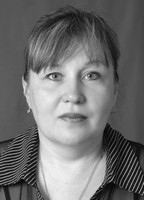Physical training to improve stress tolerance in female students diagnosed with spine curvature disorders
Фотографии:
ˑ:
Teoriya i praktika fizicheskoy kultury №11 2017, pp.45-48
Dr.Biol., Associate Professor O.N. Belousova1
Dr.Biol., Associate Professor N.V. Mamylina1
A.A. Semchenko1
1South Ural State Humanitarian Pedagogical University, Chelyabinsk
Objective of the study was to substantiate the need for additional corrective physical practices in the academic life of the first-year female students to correct the reversible musculoskeletal disorders and step up the bodily adaptive capability to emotional stressors of different aetiologies. For these purposes, we applied a variety of instrumental test methods to trace variations in the spine curvature, upper and lower limbs and stress tolerance rates. The study data was indicative of the need for additional corrective physical training practices for spinal curvature correction in female students. The study showed benefits of the combined fitball and health-building swimming practices for the first-year female students’ as verified by the improved stress tolerance rates and notable growth of motivations for the physical practices.
Keywords: adaptation, stress, stress tolerance, musculoskeletal system, fitball.
References
- Bayguzhin P.A. Optimizatsiya otsenki pokazateley sensomotornoy reaktsii – prediktorov funktsionalnogo sostoyaniya tsentralnoy nervnoy sistemy [Optimization of evaluation procedure of sensorimotor reaction parameters - predictors of functional state of central nervous system]. Sovremennye problemy nauki i obrazovaniya, 2011, no. 6. Available at: https://www.science-education.ru/ru/article/view?id=5204 (Date of access: 31.01.2017).
- Belousova N.A., Shorokhova E.S. Kharakteristika sostoyaniya stressoustoychivosti pomoschnikov mashinistov [Characteristics of stress tolerance of assistant engine drivers]. Sovremennye problemy nauki i obrazovaniya, 2016, no. 3. Available at: http://www.science-education.ru/ru/article/view?id=24480 (Date of access: 31.01.2017).
- Vardanyan B.X. Mekhanizmy samoregulyatsii emotsionalnoy ustoychivosti [Mechanisms of self-regulation of emotional stability]. Moscow: Nauka publ., 2008, 380 p.
- Isaev A.P., Epishev V.V. et al. Sravnitelnye rezultaty skanirovaniya pozvonochnika sportsmenov [Athletes’ spinal scan: comparative results]. Vestnik Yuzhno-Uralskogo gosudarstvennogo universiteta. Seriya: Obrazovanie, zdravookhranenie, fizicheskaya kultura, 2013. no. 1, pp. 39–47
- Kiseleva Zh.I., Shavshaeva L.Y., Shlyapnikova V.V. Metodika samostoyatelnykh zanyatiy studentok s fitbolami [Method of self-reliant fitball practice for female students]. Vestnik Orenburgskogo gosudarstvennogo universiteta, 2016, no. 1, pp. 22-26. Available at: http://vestnik.osu.ru/2016_1/5.pdf (Date of access: 31.01.2017).
- Mamylina N.V., Belousova N.A. Fermentemiya kak pokazatel povrezhdeniya organizma pri dlitelnom emotsionalnom stresse i gipokinezii [Enzyme as an indicator of damage to the body with prolonged emotional stress and hypokinesia]. Vestnik Chelyabinskogo gosudarstvennogo pedagogicheskogo universiteta, Chelyabinsk: SUSPU publ., 2003, no. 5, pp. 120-124.
- Sivakov V.I., Sivakov D.V., Sivakov V.V. Kvantovy metod v povyshenii energosistemy sportsmenov [Quantum method to increase athletes’ energy system]. Uchenye zapiski un-ta im. P.F. Lesgafta, 2016, no. 12 (142), 2016, pp. 116-120.
- Sivakov V.I., Sibagatullin A.R. Kvantovy metod v povyshenii energosistemy sportsmenov v protsesse sovershenstvovaniya tekhnicheskoy i fizicheskoy podgotovki [Quantum method to increase athletes’ energy system in technical and physical abilities improvement process]. Uchenye zapiski un-ta im. P.F. Lesgafta, 2017, no. 2 (144), pp. 234-237.
- Tserkovskiy A.L. Sovremennye vzglyady na problemu stressoustoychivosti [Modern views on the problem of stress tolerance]. Vestnik Vitebskogo gos. med. Universiteta, 2011, no. 1, vol. 10. Vitebsk: Vitebsk State Medical University, 2011, pp. 6-21.



 Журнал "THEORY AND PRACTICE
Журнал "THEORY AND PRACTICE